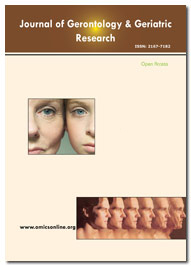PMC/PubMed Indexed Articles
Indexed In
- Open J Gate
- Genamics JournalSeek
- SafetyLit
- RefSeek
- Hamdard University
- EBSCO A-Z
- OCLC- WorldCat
- Publons
- Geneva Foundation for Medical Education and Research
- Euro Pub
- Google Scholar
Useful Links
Share This Page
Journal Flyer

Open Access Journals
- Agri and Aquaculture
- Biochemistry
- Bioinformatics & Systems Biology
- Business & Management
- Chemistry
- Clinical Sciences
- Engineering
- Food & Nutrition
- General Science
- Genetics & Molecular Biology
- Immunology & Microbiology
- Medical Sciences
- Neuroscience & Psychology
- Nursing & Health Care
- Pharmaceutical Sciences
Abstract
Effects of Brisk Walking on Physical Performance and Muscle Function in Community Dwelling Elderly Women
Andrea P Rossi*, Sofia Rubele, Luca Pelizzari, Francesco Fantin, Susanna Morgante, Omar Marchi, Francesco Pedelini, Elena Zoico, Gloria Mazzali and Mauro Zamboni
Aim: To examine the impact of a 12-week brisk walking program on physical performance and muscle function in community-dwelling healthy elderly women.
Methods: The study was conducted in a group of 27 women with mean age 68.6 ± 5.5 years and mean BMI 28.2 ± 4.37 Kg/m2. Anthropometric variables (BMI, weight, height, waist circumference), body composition measured by Dual Energy X-ray Absorptiometry (DXA), the 400 meters walking test, the short physical performance battery, the physical activity level with the PASE questionnaire, handgrip, isometric strength and power of the lower limbs with dynamometer were evaluated at baseline and three months follow-up. All subjects were involved in brisk walking sessions, 1 and ½ h per day on 2 days each week under the supervision of a qualified physical education instructor for 12 weeks. The physical activity intensity has been calculated on the basis of the Borg Scale (RPE scale=13 “somewhat hard”).
Results: At 3 months of follow-up, a reduction in waist circumference, total and percentage fat mass, an improvement of peak torque and power of lower limbs and in all the performance test administered was observed. In addition, dividing the population into two sub-groups based on the frequency to walking groups, it was observed that the group with higher attendance presented a significantly greater increase of muscle peak torque, power and specific power values. Moreover subjects with greater attendance showed significantly higher reduction of the time to perform the 400 meters test.
Conclusions: Moderate aerobic exercise can improve muscle strength, physical performance and body composition. Dividing the study population into two groups on the basis of greater or lesser participation in the walk groups, the group with frequency percentage higher than 70% showed a significantly greater improvement in peak torque, power and the specific power, suggesting a dose-dependent effect.

